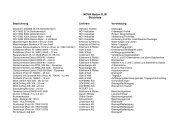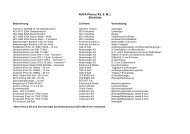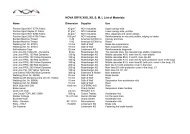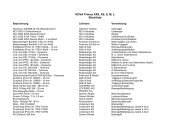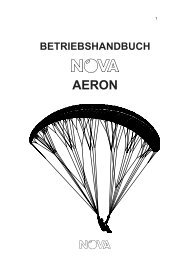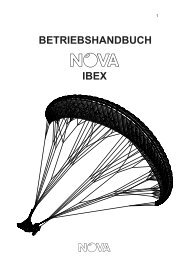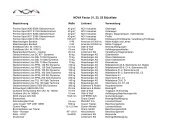Version 1.0 01/06/2011 - Nova Paragliding
Version 1.0 01/06/2011 - Nova Paragliding
Version 1.0 01/06/2011 - Nova Paragliding
Create successful ePaper yourself
Turn your PDF publications into a flip-book with our unique Google optimized e-Paper software.
Just before touch down you should apply more brake. Many times it makes<br />
sense to induce a stall.<br />
Attention: A deep stall in just 2 meters height can cause a quite violent<br />
touch down. Make sure to not fully apply the brakes until you are close<br />
enough to the ground.<br />
Manoeuvres for fast decent<br />
Big ears<br />
To do big ears, pull the outer A-line (attached on a separate belt) on both sides.<br />
Keep the brake handles (without extra wraps) in your hands.<br />
As long as you keep both outer A-risers pulled, the wingtips will be folded and<br />
the sink speed will increase. We recommend to additionally push the speed bar<br />
to increase the sink speed further and to also increase forward speed. The drag<br />
of the folded wingtips increases the angle of attack. By pushing the speed bar,<br />
this effect is compensated.<br />
To end the manoeuvre, release the A-risers. If the wingtips don’t open<br />
automatically, you can inflate them by applying the brakes with a short impulse<br />
movement.<br />
B-Stall<br />
Due to the aspect ratio of the glider and due to the suspension layout, the<br />
FACTOR 2 can show a quite demanding behaviour when executing the B-Stall.<br />
But a manoeuvre for fast decent has work perfectly in very turbulent<br />
conditions. That’s why we do not recommend the B-Stall with the FACTOR 2.<br />
Deep spiral<br />
The deep spiral is the most demanding of the three manoeuvres. (Ears, B-Stall<br />
and Deep Spiral) You should only practise it with a lot of altitude. The best<br />
way is to learn it under professional guidance.<br />
Entering a deep spiral can be divided into two phases:<br />
First, you fly a turn by applying one brake and by shifting your weight to the<br />
same side, the glider will bank up and increase its turning speed. This phase<br />
ends at a sink rate of roughly 8m/s – 10m/s. (depending on the wing loading)<br />
Vers.<strong>1.0</strong><br />
0<strong>1.0</strong>6.2<strong>01</strong>1 S. 15 / 39





